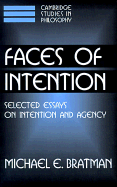Book contents
- Frontmatter
- Contents
- Acknowledgments
- 1 Introduction: Planning Agents in a Social World
- PART ONE ACCEPTANCE AND STABILITY
- 2 Practical Reasoning and Acceptance in a Context
- 3 Planning and Temptation
- 4 Toxin, Temptation, and the Stability of Intention
- PART TWO SHARED AGENCY
- PART THREE RESPONSIBILITY AND IDENTIFICATION
- PART FOUR CRITICAL STUDIES
- Index
3 - Planning and Temptation
Published online by Cambridge University Press: 18 December 2009
- Frontmatter
- Contents
- Acknowledgments
- 1 Introduction: Planning Agents in a Social World
- PART ONE ACCEPTANCE AND STABILITY
- 2 Practical Reasoning and Acceptance in a Context
- 3 Planning and Temptation
- 4 Toxin, Temptation, and the Stability of Intention
- PART TWO SHARED AGENCY
- PART THREE RESPONSIBILITY AND IDENTIFICATION
- PART FOUR CRITICAL STUDIES
- Index
Summary
Much of our behavior is organized. It is organized over time within the life of the agent, and it is organized interpersonally. This morning I began gathering tools to fix the bicycles in the garage. I did this because I was planning to go on a bike trip tomorrow with my son and knew I needed first to fix the bikes. Just before I gathered the tools, I was on the telephone ordering tickets for a trip to Philadelphia next week. I did that because I was planning to meet my friend in Philadelphia then. If all goes well, each of these actions will be part of a distinct coordinated, organized sequence of actions. Each sequence will involve coordinated actions, both of mine and of others. These sequences will also need to be coordinated with each other. Such coordination of action – between different actions of the same agent and between the actions of different agents – is central to our lives.
How do we accomplish this organization? It seems plausible to suppose that part of the answer will appeal to commonsense ideas about planning. It is part of our commonsense conception of ourselves that we are planning agents (Bratman 1983, 1987). We achieve coordination – both intrapersonal and social – in part by making decisions concerning what to do in the further future. Given such decisions, we try to shape our actions in the nearer future in ways that fit with and support what it is we have decided to do in the later future. We do that, in large part, by planning.
- Type
- Chapter
- Information
- Faces of IntentionSelected Essays on Intention and Agency, pp. 35 - 57Publisher: Cambridge University PressPrint publication year: 1999
- 6
- Cited by



